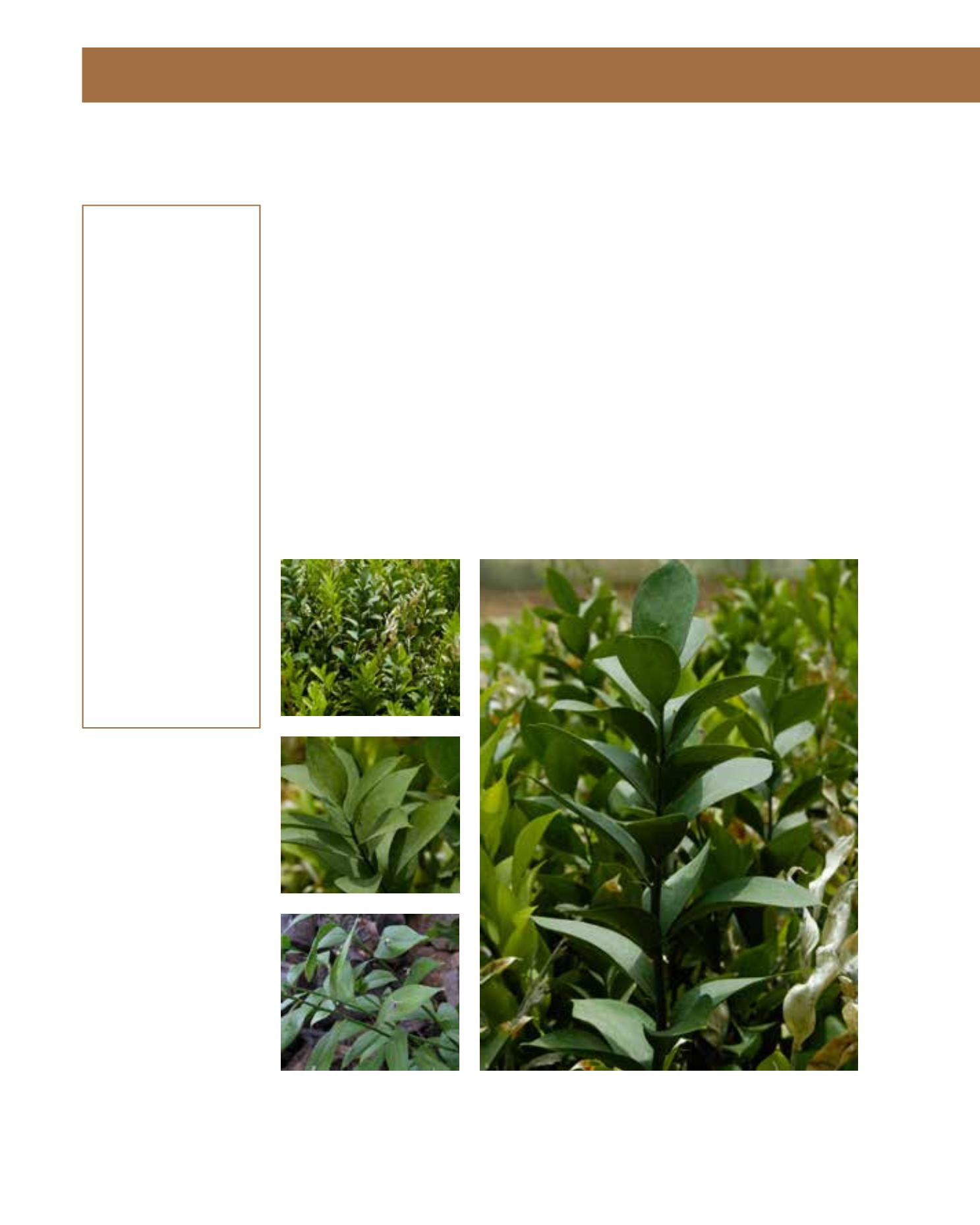

GENERAL
Origin
:
sub-Mediterranean,
Mediterranean,
sub-tropical
Humidity
:
semi-humid, very
humid
Propagation :
sowing and
pricking out,
division
Maintenance :
low
CONDITIONS
Urban climate :
vulnerable
Dessication :
vulnerable
Stagnant water :
vulnerable
Irrigation
:
medium
Salinity/ppm :
moderate (1800
ppm)
Hardiness
:
-15°C
SHAPE
Type
:
shrub
Height
:
0.3 m-0.6 m
Spread
:
0.4 m-0.6 m
Foliage
:
evergreen
FLOWER
Colour
:
pale green
Size
:
0.5 cm
Period
:
April - May
FRUIT
Type of fruit :
berry
Fruit size
:
1 cm
This evergreen bush may be found in scrub, woodlands and old forests growing to about 60 cm in
height. A plant that looks the same all year round might seem unadventurous, but its benefits are
underestimated. Butcher’s Broom is maintenance-free and tolerates drought, deep shade, salinity
and neglect. It is frost hardy to –15°C without damage. Soils may be poor and range from acid to
alkaline. In full sun, the foliage appears pale green, while turning darker the less light is available.
It is an ideal shrub for growing vigorously beneath established trees where it has to contend with
drought and to compete with thirsty roots. Thanks to its robustness, Butcher’s Broom is a popular
plant for containers exposed to adverse conditions. If old stems are cut to the ground in early
spring, fresh new shoots appear with light green cladodes. They are also known as phylloclades,
and are actually flattened stems that resemble leaves. The true foliage consists of degenerated leaf-
lets around the flowers. The plant’s white inflorescences appear in spring and are interesting but
not striking, followed by scarlet berries in the centre of the cladodes of female plants. They are
poisonous if eaten, as are the other parts of this shrub. The stems are often used as long-lasting
elements in flower arrangements. Division is an easy method for propagating these bushes, but
stratified seeds may also be sown. Ruscus hypophyllum looks similar to R. hypoglossum, but its
stems are more arching and the cladodes are larger.
265
Ruscus hypoglossum,
Ruscaceae
Large Butcher’s Broom
















